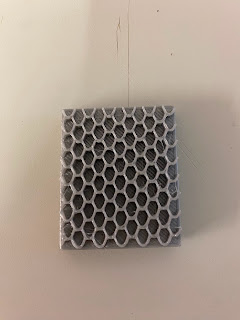Tom Hackett
Tom Hackett
Background
Tom was born in Cambridge and started his art career by studying Fine Art at Middlesex and Nottingham Trent University. Once he had established a reputation in the art world through exhibitions, installations and performative pieces, he started to lecture in fine art and critical thinking.
Tom is a sculptural artist and through his work, aims to make connections between people, places, and situations through a wide range of media and concepts. He often manipulates video and audio recordings to reflect the reality, rather than depict it. Turning the ordinary and mundane into something new and exciting by challenging societal rules of order and logic.
Lying Low To Keep Afloat
During the beginning of the pandemic, Tom took a wooden canoe and paddled and walking through five key towns on the River Trent. Due to the pandemic it was delayed, scheduled to start in spring, but changed to summer. The pandemic not only changed the timing of the project, but also the process and the outcome.
Originally the focus was to be on the River Trent and the towns it went through, but as he talked to passersby along his way, he gathered the 'incidental conversations' he heard and recorded. Using these snippets of conversation and the help of Julian Woodcock, he created a 'sound collage'. Each sentence was read by someone of a different age, gender and ethnicity of the original author and pieced together with a specially composed piano piece by Freddie Hackett.
The piece aims to highlight and celebrate the different experiences and lives of those Tom encountered along the River Trent, during an unpredictable year.
This project specifically shows me how unpredictable art can be. How plans can change so drastically and are often out of your control, but it's wether you can use the change to your advantage, or hold you back.
Unpredictability
As an artist, one has to constantly battle the fear of failure. Being a professional artist requires more than just producing art, you need to be a marketer, social media specialist and an accountant just to name a few. As an artist, you are a business, and unless you have the money, resources and connections from the beginning, you will have to do everything yourself.
With most businesses, if everything is managed well, then the business will do well. Art on the other hand can be different, in order to keep a steady income, you need to produce a steady flow of art. This however can't always be achieved, either from a bigger project that takes up more time and resources, to influences outside of your control. The pandemic is a great example of this.
The pandemic brought anxiety and uncertainty to everyone, including the loss of jobs. As a self-employed artist that isn't a problem, but the loss of jobs meant lots of people could no longer afford anything but the essentials. Art is not an essential product, and therefore the pandemic brought a loss of sales throughout the art industry. This is where it became a problem for many artists, as no-one was buying their art, they lost their steady income that many rely on, causing many people to seek income from elsewhere, putting less energy and time into their artwork.
Tom however is a great example of using a disadvantage in your favour, instead of abandoning his project, he altered it to fit the current time and environment, ultimately gaining from it. Your experiences through life can change you, but if you are able to adapt and overcome you are able to improve yourself as a person, and consequently as an artist.






Comments
Post a Comment